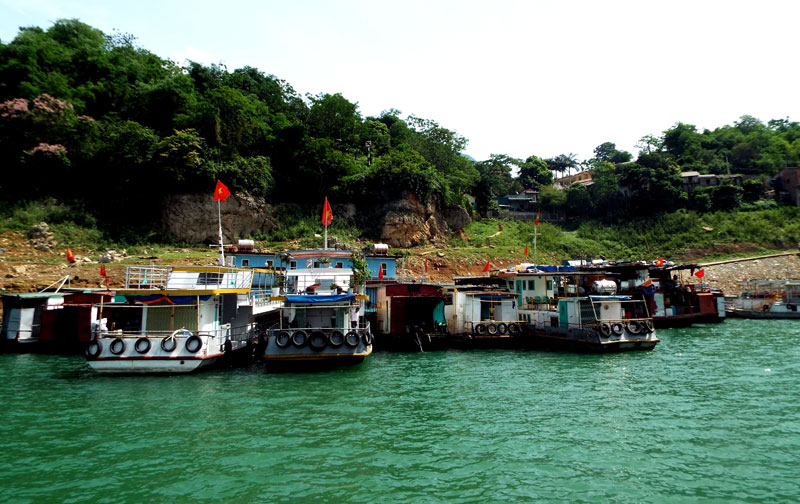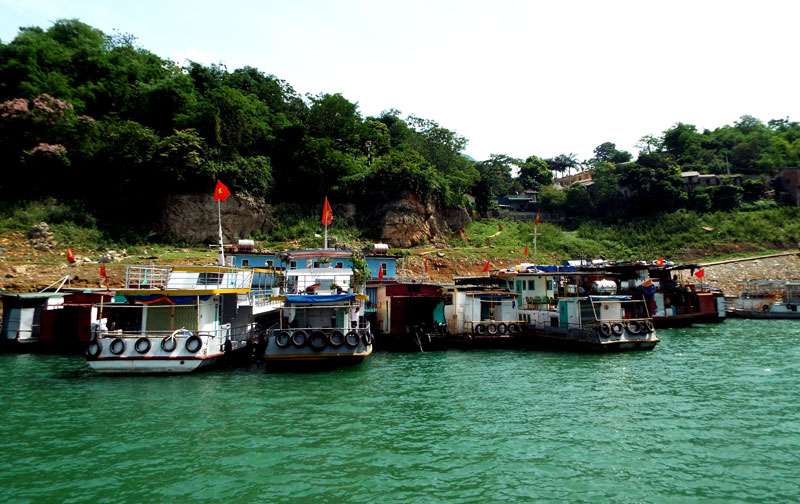


In particular,
the city has Da River which has become into legend; the very large reservoir of
the Hydroelectric Lake is a fascinating destination for near and far tourists.
Thai Thinh commune, the first place on the way to Hoa Binh Lake, has charming
scenery landscapes. The hamlets still preserves featured traditional culture.
Tourism activities have contributed significantly to transforming the economic
structures of the city. In 2017, the total number of visitors to Hoa Binh City
reached 615,000 people, including 69,000 international tourists and 546,000
national visitors, the total revenue gained 145 billion dongs, the income from
tourism activities reached 261 billion dongs.

A view
of Tru village, Thai Thinh commune, Hoa Binh City.
The Vice Head of Department of Culture and Sports of Hoa Binh City, Phi Thi Yen informed: Based on the plan of National Tourism Area of Hoa Binh Lake approved by the Prime Minister and oriented by the province, the city already built a Project of developing tourism in Hoa Binh City in the period of 2015- 2020, with a vision to 2030. Tourism development has become the important economic industry, in which focuses on investing in various resources, exploiting effectively all the potentials, strengths, and also focuses on developing tourism products, especially the reservoir of Hoa Binh Lake. For tourism resort, building the tourism areas is being implemented associated with entertainment services following the planning of National Tourism Area of Hoa Binh Lake.
About cultural
tourism, it is necessary to build connecting tourism routes among tourist destinations
of culture and spirit, such as: the historical relics of Hoa Binh Prison,
Historical Site of the Socialist Youth Workers School - where Uncle Ho visited,
Thinh Lang Temple relic, Ngoi Temple, Ba Co Tien Temple, Thang Cave, Museum of
Muong ethnic culture space, etc. The restoration and conservation of
traditional festivals have been done to become tourist destinations with
typical features, such as: Festival of Ngoi Temple, gownsman festival of Dao
ethnic people in Thong Nhat commune.
About community-
based tourism, the selected hamlets will be the ones which still preserve the
typical ethnic cultural values, such as Tru village in Thai Thinh commune, Dong
Chua village in Thong Nhat commune in order to develop the community tourism,
visit traditional handicrafts, understand the local lifestyles and production.
Along with that, the city is implementing the plan of developing sport tourism
such as cycles, motorcycles, terrain cars, golf courses; as well as developing
entertainment models associated with construction investment in shopping
centers, tourist night markets, walking streets of tourism culture, yachting on
the lake reservoir; investing in infrastructure, developing the tourism models
of conferences, seminars, exhibitions, in combination with local food culture.